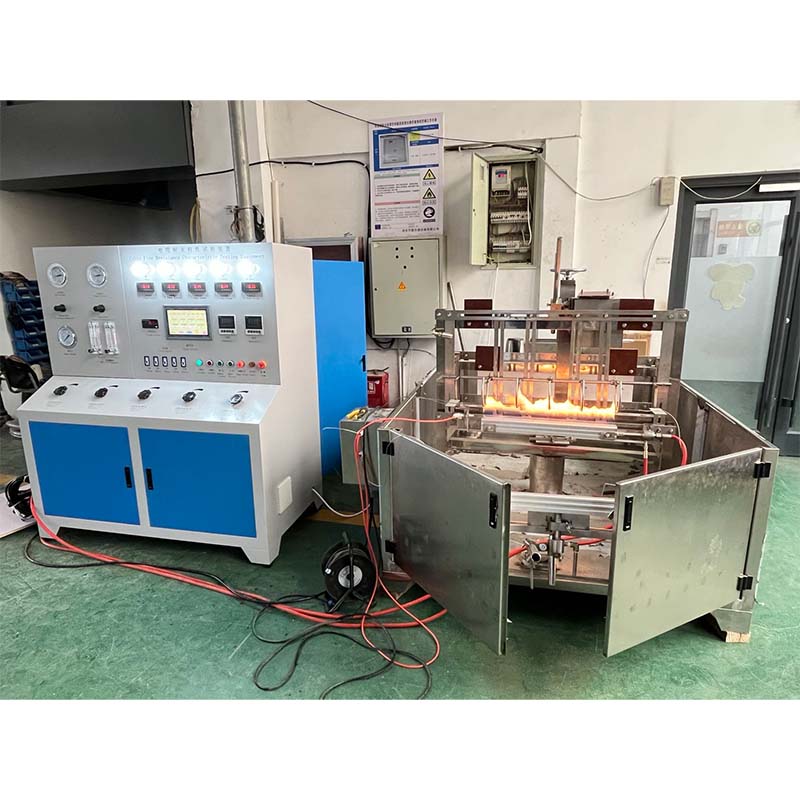clamps for tensile testers manufacturers
Understanding Clamps for Tensile Testers A Guide for Manufacturers
In the field of material testing, tensile testers play a pivotal role in determining the strength and elasticity of materials. A critical component of these testers is the clamp, which securely holds the specimen during the testing process. The choice of clamps can significantly impact the accuracy and reliability of test results. In this article, we will explore the various types of clamps used in tensile testers, their manufacturing processes, and key considerations for manufacturers looking to optimize their products.
Importance of Clamps in Tensile Testing
Clamps, also known as fixtures or grips, are designed to firmly hold the material sample in place while it is subjected to tensile forces. The primary goal is to ensure that there is no slippage or misalignment during the testing process, which can lead to erroneous data. Different materials require different types of clamps to ensure optimal performance. Factors such as the size, shape, and mechanical properties of the test specimen must be taken into consideration when selecting the appropriate clamp.
Types of Clamps
1. Mechanical Clamps These are among the most common types of clamps used in tensile testing. They operate through a simple mechanical mechanism that applies pressure evenly across the specimen. Mechanical clamps are effective for a wide range of materials and are easy to use and adjust.
2. Hydraulic Clamps This type employs hydraulic pressure to grip the test specimen securely. Hydraulic clamps are particularly useful for high-strength materials where additional gripping force is required to prevent slippage. They offer more control and precision, making them ideal for laboratory settings.
3. Pneumatic Clamps Similar to hydraulic clamps, pneumatic clamps use compressed air for operation. They are generally lighter and can be quicker to operate than hydraulic counterparts. However, they are less common in tensile testing due to potential air supply issues that could compromise testing reliability.
4. Adaptive Clamps These advanced clamps can automatically adjust to the size and shape of the specimen, providing a tailored grip. They are increasingly being developed with the rise of smart technology in manufacturing and offer a solution for a diverse range of materials and shapes.
Manufacturing Considerations
clamps for tensile testers manufacturers

When developing clamps for tensile testers, manufacturers must consider several important factors
1. Material Choice The material used to manufacture clamps directly affects their performance and durability. High-strength alloys and composites are often preferred to minimize wear and tear, while also resisting deformation under high loads.
2. Design and Ergonomics A well-designed clamp not only ensures an effective grip but also allows for easy handling. Ergonomic considerations are crucial, especially for heavy specimens that require manual intervention.
3. Testing Standards Compliance Manufacturers must ensure that their clamps comply with international testing standards, such as ASTM and ISO. This compliance guarantees that the clamps will deliver accurate and reliable results in line with global benchmarks.
4. Customization Different industries may have specific requirements for clamps based on the type of materials being tested. Manufacturers should consider offering customizable options to meet the unique needs of various clients.
5. Cost-Effectiveness Balancing quality and cost is a pivotal challenge for manufacturers. Investing in high-quality materials and advanced manufacturing techniques may lead to higher initial costs, but they can enhance long-term durability and reduce the need for frequent replacements.
Future Trends
As the field of material testing continues to evolve, so do the technologies used in clamps. Innovations like 3D printing are making it possible to create complex, lightweight designs that were previously unattainable. Additionally, the integration of IoT (Internet of Things) technology allows for real-time monitoring of testing conditions, leading to improved data accuracy.
In conclusion, clamps are an essential component of tensile testers, and their design and manufacturing significantly influence testing outcomes. By understanding the various types of clamps, their functions, and the considerations involved in their production, manufacturers can improve the quality of their tensile testing solutions, ensuring that they meet the diverse needs of their customers effectively. As technologies advance, the future of clamps in material testing holds exciting potential for innovation and improved performance.
-
Why the Conductor Resistance Constant Temperature Measurement Machine Redefines Precision
NewsJun.20,2025
-
Reliable Testing Starts Here: Why the High Insulation Resistance Measuring Instrument Is a Must-Have
NewsJun.20,2025
-
Flexible Cable Flexing Test Equipment: The Precision Standard for Cable Durability and Performance Testing
NewsJun.20,2025
-
Digital Measurement Projector: Precision Visualization for Modern Manufacturing
NewsJun.20,2025
-
Computer Control Electronic Tensile Tester: Precision and Power for the Modern Metal Industry
NewsJun.20,2025
-
Cable Spark Tester: Your Ultimate Insulation Assurance for Wire and Cable Testing
NewsJun.20,2025
 Copyright © 2025 Hebei Fangyuan Instrument & Equipment Co.,Ltd. All Rights Reserved. Sitemap | Privacy Policy
Copyright © 2025 Hebei Fangyuan Instrument & Equipment Co.,Ltd. All Rights Reserved. Sitemap | Privacy Policy
